每日观察:关注智能手机及平板电脑用户支持率(7.13)
1)Retrevo在上个月对1000多名智能手机用户的调查结果表明,多数用户对4G仍然不甚了解,有34%用户认为自己的iPhone已经支持4G技术,而实际上今天的多数iPhone仍仅支持3G。
除此之外,有24%黑莓用户认为RIM已经在其智能手机中植入了4G技术,可事实上RIM至今仍未推出任何一部4G手机;抱有同样看法的Android手机用户比例也达到了29%。
值得注意的是,61%的iPhone用户并不关心下一代iPhone的4G技术服务。
2)Deutsche Bank分析师Chris Whitmore最新报告指出,每名iOS用户在手机内容上的平均消费金额是100美元,这种相对较高的成本投入也正是多数iOS用户不愿轻易转向其他手机平台,苹果用户的忠诚度比其他手机用户更高的原因之一。
他还预测由于苹果将于今年9月推出相对实惠的iPhone 4S手机,到2012年苹果iOS用户将增长至3亿,其移动设备销售额将达300亿美元。
Whitmore认为由于iPhone、iPod touch和iPad将通过iOS 5推出更强大的功能,所以苹果产品对iOS用户的粘性还会越来越强。
3)据pocketgamer报道,黑莓应用商店App World自上线两年以来,目前每天下载量已达300万次,总计已超10亿次,但仍难敌苹果App Store的150亿次下载量以及诺基亚Ovi Store的每日600万次下载量。
该平台较受欢迎的游戏是BlackMoon Design推出的《Doodle Blast》(仅限运行于PlayBook平板电脑),该免费游戏由Flash开发而成,在三个月内实现了4万次下载量。
在应用程序方面,德国开发商Bellshare共收获将近1000万次下载量,而BlackBerry Messenger虚拟形象、情感和聊天应用Jingu则在不足一个月时间内创造了70万次下载量。
4)微软首席执行官Steve Ballmer日前承认Windows Phone 7的表现的确没有达到公司预期,他称公司在手机领域的地位仍然渺小,但他们会继续前进,所以这个市场仍将朝着极具竞争性的方向发展。据最新调查数据显示,微软目前在美国智能手机市场仅占5%的份额。
5)前Veraz Networks高管AI Woods日前加入移动广告网络Tapjoy,担任该公司首席技术官。Woods此前还曾在手机应用公司PalmSource就职。
6)市场咨询公司asymco最近引用comScore报告的数据指出,美国智能手机市场已开始出现Android和iOS两分天下的局面。值得注意的是,该公司认为这两者的强大与RIM和微软的失势直接相关。
数据显示Android在5月份收获了210万新用户,而iOS同一时期的新用户是100万左右,但黑莓和webOS的用户都在逐月下滑,在5月份时的用户分别降至20.2万和9.6万。
Android和iOS在吸收新用户的同时,也促使更多RIM和惠普手机用户“转移阵地”,asymco统计该月的智能手机用户“转移率”达到1.22%。
从2009年12月至今年5月的数据来看,微软智能手机销量无疑大为下滑,Window Mobile和Windows Phone用户基数在过去17个月中,已从原来的1800万下降至目前的580万。
7)尼尔森最新调查预测,亚洲目前虽然仅有20%的智能手机用户,但有一半用户有意晋升为智能手机使用者。Android是亚洲地区最占优势的手机操作系统,但iPhone和黑莓在该地区也会很有市场。
iPhone是越南第二大手机品牌,而黑莓则是印度尼西亚第四大手机品牌。
8)Zynga日前宣布基于开源2D Android OpenGL的游戏引擎AndEngine开发者Nicolas Gramlich已加入公司手机游戏团队,据Gramlich博客信息显示,该游戏引擎仍将保持开源特点。
9)据Resovle Market Research最新调查数据显示,2011年仅有14%的游戏玩家有意购买一部平板电脑而非掌机设备,而去年的同一比例则是27%。
仅有26%受访者称很想要一部平板电脑而非掌机游戏设备,去年的这一比例则是38%。
调查还发现,电子阅读器和笔记本电脑的吸引力正在减弱,约有42%平板电脑用户不打算购买笔记本电脑。而57%的商务用户则表示平板电脑已经部分取代了笔记本电脑的作用。
iPad仍是所有平板电脑中的王者,其品牌知名度达90%,而iPad 2的知名度则是83%,其次是三星Galaxy Tab(46%),以及摩托罗拉Xoom(44%)。
三分之一的平板电脑用户拥有两部平板设备,46%的单部平板电脑用户称希望在半年内再买一部设备。
10)法国发行商Gameloft旗下的手机社交游戏平台Live!目前用户已达400万(游戏邦注:但OpenFeint注册用户已超过9000万)。Gameloft Live!于2008年中期上线,原先用于网页及手机聊天功能,但在2009年进军iOS市场。Gameloft的iOS游戏已在今年6月实现了2亿次下载量,所以Live!这一服务未来或将来更多发展机遇。(本文为游戏邦/gamerboom.com编译,如需转载请联系:游戏邦)
1)Passionate techies may be clamoring for 4G connectivity in the iPhone 5, but a facepalm-worthy percentage of existing iPhone owners think their beloved iOS phone already has it, a new study from Retrevo suggests.
Of a sample audience of more than 1,000 smartphone users surveyed last month, 34% believed their iPhone supported 4G connectivity, despite the fact that most recent model only sports a 3G antenna.
But they weren’t alone; similarly, 24% of BlackBerry owners believed their devices were 4G-enabled although RIM has yet to release a 4G handset.
Interestingly, the same study found that 61% of the iPhone owners polled didn’t care whether 4G services would be available in the next version of the iPhone. (source:ign)
2)Customer loyalty to iOS ‘unparalleled’ as average user spends $100 on content
by Keith Andrew
One of the perceived differences between the mobile market and console is the flow of consumers in and out of different ecosystems.
While users are effectively tied to the console they purchase for 4 or 5 years, the nature of mobile contracts means consumers tend to switch handsets every 12, 18 or 24 months, creating an opportunity for one OS to eat into the share of another.
Not where iOS is concerned, however. According to a report by Deutsche Bank analyst Chris Whitmore, each iOS user spends an average of $100 on content for their device – a weighty investment that makes them reluctant to switch sides to back one of Apple’s rivals.
Money talks
“This averages to (about) $100 of content for each installed device; suggesting switching costs are relatively high (not to mention the time required to port),” Whitmore said in a note.
“While Apple’s best in class user experience is combined with these growing switching costs, the resulting customer loyalty is unparalleled.”
Even more encouraging for Apple – and, in turn, depressing for its competitors – is Whitmore’s suggestion that this ‘stickiness’ will cement further as the platform’s userbase continues to grow.
All in the OS
Whitmore, who recently predicted Apple will launch a budget and contract free iPhone 4S this September, believes Apple’s iOS userbase will grow to 300 million by the end of 2012, with sales worth more than $30 billion.
In his view, these new consumers will be less and less likely to break away from the Apple fold thanks to the new features set to roll out on iPhone, iPod touch and iPad in iOS 5.
“In addition to new hardware, we expect the combination of an enormous iOS ecosystem, iCloud and a lower priced iPhone will extend AAPL’s market reach and leadership with developers and customers alike, further enhancing the overall value of the iOS platform,” he concluded.(source:pocketgamer)
3)With an average of 3 million downloads daily, BlackBerry App World hits the one billion total
by Jon Jordan
It seems to be in a bit of a mess corporately at the moment, but BlackBerry is continuing to highlight little victories where it can.
In this context, it’s been pointing out some of the games and apps that have been performing on BlackBerry App World, which is about to reach its 3.0 version.
RIM points out in the two years since it launched, the app store is now handling three million downloads daily, and has now topped one billion in total. Not so much compared to Apple’s 15 billion total or even Nokia’s 5 million downloads daily count on its app store, but it’s a start.
All adds up
Leading the games charge is BlackMoon Design’s Doodle Blast. Only available for the PlayBook tablet, it’s a free doodle puzzle game, developed with Flash, that’s been downloaded 40,000 times in three months.
In terms of apps, German outfit Bellshare has accumulated almost 10 million downloads for the free versions of titles such as BeBuzz and BeWeather, also generating over $1 million in sales. BlackBerry Messenger avatar, emoticon and chat app Jingu has been downloaded over 700,000 in less than a month.(source:pocketgamer)
4)Ballmer: Windows Phone sales went from very small to very small
By: Marin Perez
Well, you can say a lot of things about Microsoft CEO Steve Ballmer but you can’t say the man doesn’t have a sense of humor. At a recent Microsoft partner event, Ballmer acknowledged that Windows Phone 7 hasn’t been the smash hit the company had been hoping for.
“Phones, we’ve gone from very small to very small, but it’s been a heck of a year. And you’re going to see a lot of progress in that market competitively as we move forward.”,” Ballmer said, according to DailyTech.
The recent smartphone data reports that the smartphone market is booming but Microsoft isn’t really riding that wave with Windows Phone. While the iPhone and Android are moving millions of units a day, Microsoft has roughly 5 percent of the U.S. smartphone market.
That percentage isn’t awful – webOS is in an even worse position – but it’s definitely not what Microsoft thought would happen when it introduced Windows Phone last Fall. I think the problem is that the software and hardware is just not quite as good as the competition yet but that should be changing as the next crop of Windows Phone will run the Mango update and feature higher hardware requirements. The Nokia deal should also help it get more handsets on the market. (source:intomobile)
5)Mobile Veteran Al Wood Joins Tapjoy As CFO
by Frank Cifaldi
Former Veraz Networks CFO Al Woods has joined mobile ad network Tapjoy, the company said Tuesday.
The hire comes just on the heels of a $30 million funding round, and will arm the company for its planned growth.
“I am delighted to join Tapjoy, a clear leader in mobile applications marketing, and to help contribute to our rapid growth and the execution of our exciting plans,” said Wood. “As demonstrated by the company’s recent funding, our leadership in the discovery, distribution and revenue of mobile applications, and our strong foundation of innovative technology, we are well positioned to win in one of the fastest growing global markets. This is truly a unique opportunity with tremendous potential.”
Woods’ previous company, Veraz Networks, is a supplier of VoIP networks and equipment. Woods led the company from a late stage startup to a public company, which merged with Dialogic Corporation in 2010.
Prior to Veraz, Woods was the CFO of OS and applications company PalmSource. (source:gamasutra)
6)Microsoft losing 717,000 smartphone users a month in US as Android and iOS squeeze competition
by Keith Andrew
Using data sourced from comScore’s MobiLens reports from December 2009 onwards, leading advisory firm asymco believes the US smartphone market is becoming increasingly dominated by two powers: Android and iOS.
The identity of the platforms at the top of the tree is far from surprising, but what’s more alarming is just where their growth is coming from.
The firm’s assessment states that, despite the continued expansion of the smartphone sector as a whole, Google and Apple’s surge is coming at the direct expense of previous major players like RIM and Microsoft.
It takes two
Raw numbers suggest Android gained a total of 2.1 million new subscribers during the last report period of May.
That puts Google’s platform ahead of iOS, which picked up 1 million new users of its own across the same period.
In contrast, the userbases of both BlackBerry and webOS are declining month after month, falling by 202,000 and 96,000 subscribers in May respectively.
In essence, as well as picking up users new to the smartphone market, Android and iOS are forcing the userbases of their rivals down as consumers abandon RIM and HP’s smaller ecosystems.
Dubbed the ‘churn’, asymco pegs the monthly rate of switchers at 1.22 percent of the total smartphone userbase.
Down, but not out?
Most alarming are the cumulative figures taken from December 2009 through to comScore’s most recent report in May.
Microsoft undoubtedly steals the headlines on this score, with the firm’s userbase of 18 million dropping like a stone across the 17 month period to a total of 5.8 million users across Window Mobile and Windows Phone in May.(source:pocketgamer)
7)Nielsen predicts Asian smartphone explosion as 50% of mobile users upgrade in 2011
by Keith Andrew
Lagging between US and Europe in terms of smartphone adoption, research firm Nielsen is billing Asia as a massive opportunity.
Consumer figures obtained by the firm suggest, while only 20 percent of mobile consumers currently own a smartphone, almost half intend to upgrade to one in 2011.
That’s an increase the firm believes will trigger a surge to mirror growth already seen in the west.
Meeting of minds
However, while Android is already perceived by many to be the dominant force in the region, Nielsen believes the mindshare enjoyed by both iPhone and BlackBerry will see them come out on top.
“In our recent brand surveys, iPhone was second amongst all handset brands in Vietnam in terms of top-of-mind recall, while in Indonesia, BlackBerry was in fourth place, ahead of many longer established handset brands,” said global executive director of telecom practice Hanis Harun on the Nielsen blog.
“Mind share will likely play a key role in determining which brands will do well in the region, and the iPhone and BlackBerry have much higher mind share relative to their current market positions.”
As a result, Harun asserts both Apple and RIM will be able to grow their businesses in key Asian markets far quicker than rivals that already enjoy a strong base.(source:pocketgamer)
8)Zynga hires Nicolas Gramlich, the coder behind open source Android AndEngine
by Jon Jordan
Like a black hole, Zynga continues to suck in more and more mobile development talent.
Following the purchase of Canadian outfit Five Mobile last week, it’s now hired Nicolas Gramlich, the developer behind the open source 2D Android OpenGL game engine AndEngine.
Gramlich announced the news on his blog, saying “I’m very excited to announce that I am joining the Zynga Mobile team.
“Zynga has long been an advocate of the open source community. For example, the key contributors behind cocos2D recently joined Zynga, and I’m proud to join in this tradition.”
Weight of numbers
He explained, he’ll continue to support and contribute to the engine, operating the blog and forum, while AndEngine will remain open source.
Of course, whether or not Zynga will itself use the engine for its games, the context of the move is the company’s stated focus on bulking up its mobile development.
“We believe there is a large opportunity to extend our brand and games to mobile platforms such as Apple iOS and Google Android,” it said in its IPO listing document.
“We will continue to make our games accessible on a large number of mobile and other Internet-connected devices and invest in developing and acquiring mobile development talent, technologies and content.”(source:pocketgamer)
9)Tablets losing appeal as gaming devices reckons Resolve Market Research
by Keith Andrew
As a new hardware sector, it was assumed tablets would only thrive by stealing unit sales from other sectors.
Almost every market – from PC, to console, to eReader – has been cited as a possible target since, though the latest numbers released by Resolve Market Research suggest the tablet’s impact on more traditional gaming mediums is shrinking.
According to the results of its annual consumer survey, only 14 percent of gamers plan to buy a tablet instead of a console in 2011, down from last year’s figure of 27 percent.
It’s game on
Handhelds are also beginning to regain their status.
Just 26 percent of those surveyed said they’re more likely to buy a tablet instead of a portable gaming device this year, down from 38 percent in 2010.
Instead, Resolve believes eReaders and laptops are currently taking the strain, with 53 percent of consumers with a tablet saying they wouldn’t buy a tablet to access digital books and 42 percent not planning to buy a laptop. Indeed, 57 percent of business users say their tablet has partially replaced their laptop.
That’s an impact that could well be nullified, however, by the likes of Barnes & Noble’s app-equipped Nook Color and the heavily rumoured Amazon tablet, expected before the end of the year, not forgetting the success of its Kindle eReader.
Tablet trials
Of course, when it comes to the battle between the tablets themselves, the original iPad still leads the way with 90 percent awareness.
For reasons unknown, its successor only has 83 percent awareness, though it’s comfortably ahead of the bulk of the competition.
Following in their wake come Samsung’s Galaxy Tab on 46 percent awareness, and Motorola’s Xoom on 44 percent.
Interestingly, a third of tablets owners have two devices, with 46 percent of single unit owners expecting to purchase another device in the next six months. (source:pocketgamer)
10)Gameloft Live! hits 4 million subscribers
by Jon Jordan
While the likes of OpenFeint, Scoreloop and Plus+ drove the early adoption of social mobile gaming networks, increasingly it’s publisher-own networks that seem to be coming to the fore.
In this context, Gameloft’s decision to tweet that its Live! service has reached 4 million members is more significant that the number itself.
After all, OpenFeint’s claimed total of 90 million registered subscribers dwarfs that number, despite Gameloft’s claim “we’re now one of the biggest mobile community! [sic]“.
Mustard seed
The service was originally launched for web and mobile chat in mid 2008, expanding into iOS with the release of iOS in July 2009.
Yet, given Gameloft announced 200 million downloads just on iOS in June, the Live! conversation rate obviously still remains in the low single digits.(source:pocketgamer)

























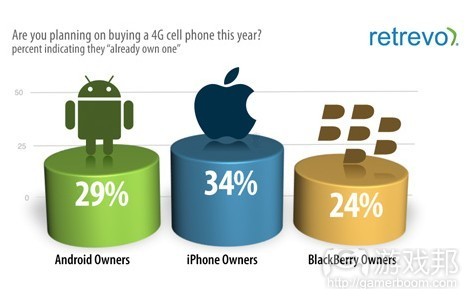
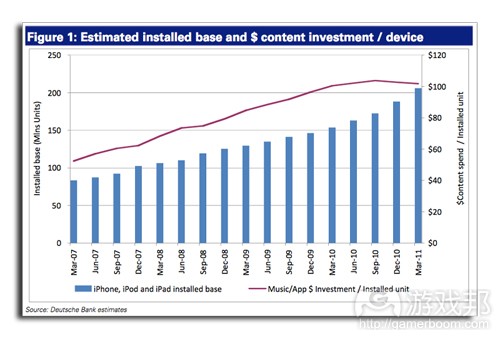

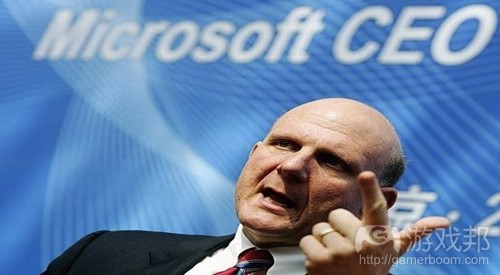
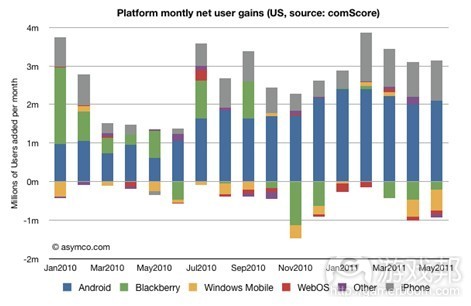

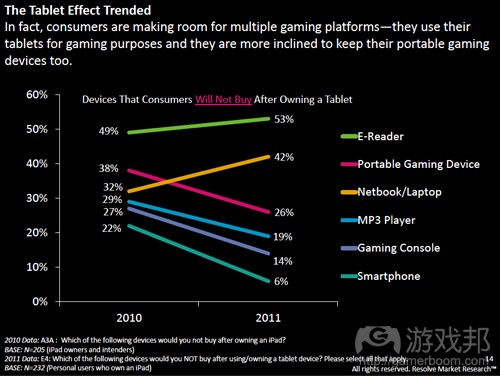














 闽公网安备35020302001549号
闽公网安备35020302001549号